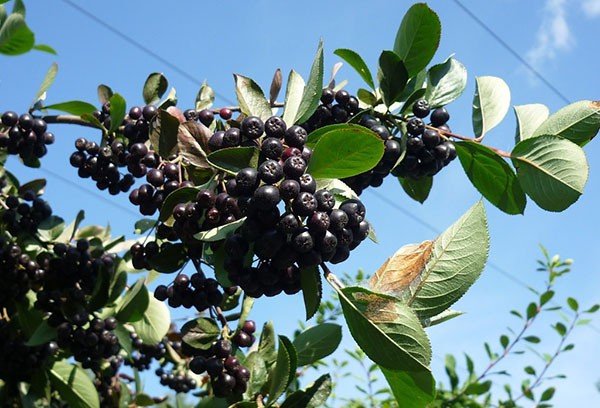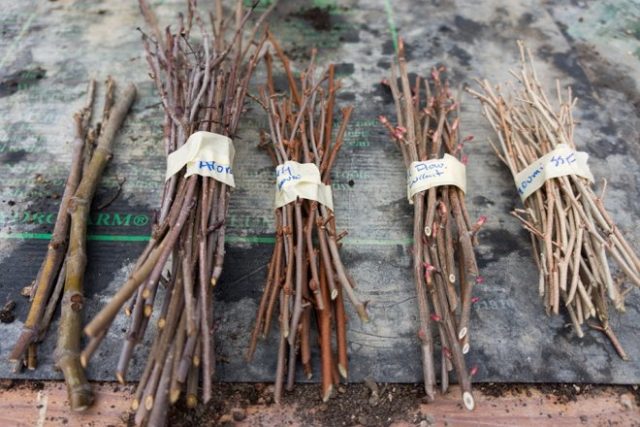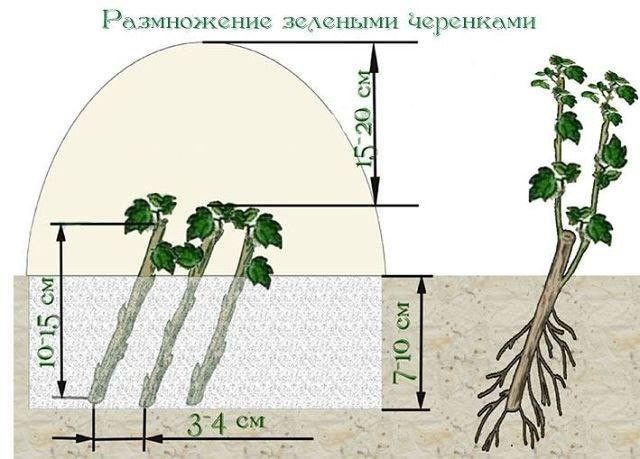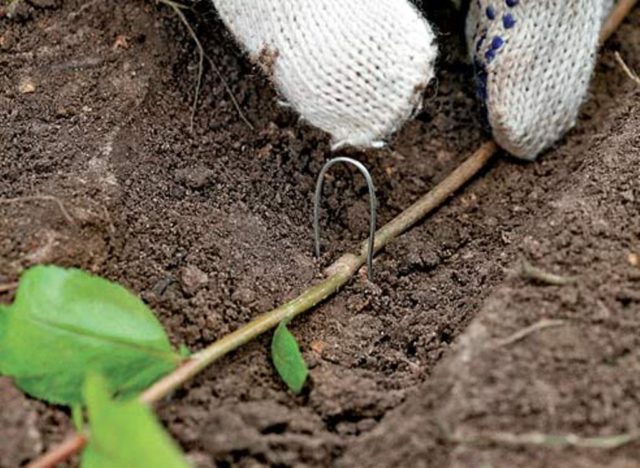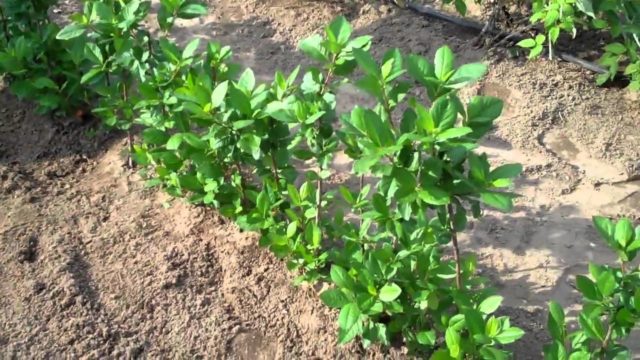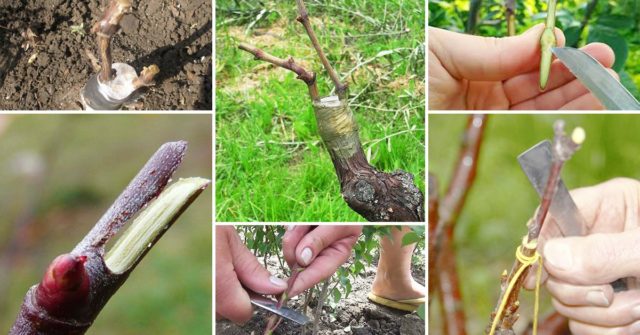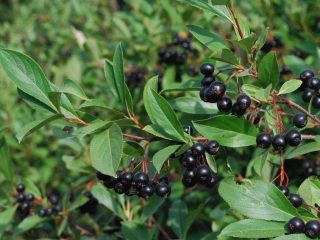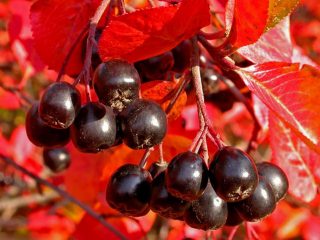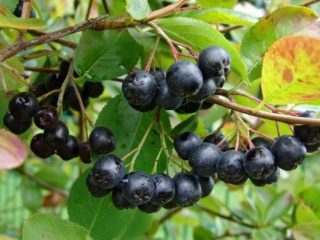Content
- 1 How chokeberry reproduces
- 2 How to propagate chokeberry by cuttings
- 3 Reproduction of chokeberry by layering
- 4 Reproduction of chokeberry by dividing the bush
- 5 How to propagate black rowan by root suckers
- 6 Reproduction of black mountain ash by seeds
- 7 Vaccination as a method of reproduction
- 8 Conclusion
Even a beginner in gardening can propagate chokeberry. The shrub is unpretentious, as a medicinal plant it is grown almost everywhere.
How chokeberry reproduces
The best time to propagate chokeberry is autumn. But there are many ways to plant a shrub in the spring. In different regions, the timing will differ, you need to look at the weather and the calendar of garden work.
In autumn, chokeberry planting is planned for September - October. Subsequent care for the shrub is uncomplicated. Spring breeding must be completed by the end of April.
Blackberry can be propagated in the following ways:
- cuttings;
- by withdrawal method;
- dividing the bush;
- root suckers;
- seeds;
- vaccination.
Of these, the most effective, which give almost 100% result, are the first 4 breeding methods. Only an experienced gardener can vaccinate at home, and seed reproduction is a long and ineffective process.
Reproduction of mountain ash-blackberry by cuttings can be carried out in spring and autumn. If you use green shoots, then the work is planned for the end of May - beginning of June. All season young blackberry bushes are grown in a greenhouse, where they winter. A transplant is made to a permanent place in a year.
You can propagate chokeberry with ripe cuttings in the fall. Use annual shoots that take root better. The blackberry is immediately planted in a permanent place.
Dividing the chokeberry bush is suitable for old plants that need to be transplanted. Breeding is best planned in the spring. Further care for the black chokeberry is reduced to abundant watering, loosening the soil.
It is better to plan the propagation of chokeberry by the diversion method in the spring. Choose one-year or two-year-old shoots. In the fall of this year or next summer, young blackberry bushes are transplanted to a permanent place. The survival rate of cuttings with this method of reproduction is 75–80%.
The chokeberry can be propagated by root shoots or offspring throughout the season, but it is better to finish the work before the beginning of summer. By autumn, the bushes will adapt to a new place.
Seed propagation of black chokeberry is a long process, planting material needs to be stratified. Its germination rate is low. The shrub takes a long time to develop.
The medicinal shrub can be propagated by grafting, which is done in early spring. To get a positive result, you need to create the necessary conditions for the blackberry. The survival rate of the vaccine is average.
How to propagate chokeberry by cuttings
Chokeberry is easily propagated by cuttings. The method is simple, does not require special knowledge and skills. Among gardeners, autumn cuttings of black chops are especially popular, which always gives a positive result, and you do not need to make any special efforts in reproduction. Even if the time for planting is missed, then you can save the planting material until spring.
Lignified
To propagate black chokeberry, lignified shoots 15–20 cm in size are cut out. The upper part of the branch is not used, cuttings are cut from the middle part, so that each one has 6 buds. The lower cut is made straight, directly under the peephole.
Lignified chokeberry cuttings are planted in fertile soil in a well-lit place. Only 2 buds are left above the soil surface. They take root in 3 - 4 weeks, in the spring they quickly start to grow. For the winter, blackberry mulch is good.
If the cold comes early, chokeberry cuttings prepared for propagation should be preserved until spring. They are sorted and tied into a bundle. The bottom edge is placed in wet sand or cloth, after which it is wrapped in a bag so that the shoots do not dry out. Every week, the condition of the chokeberry cuttings is checked, moistened if necessary.
Black chops are stored in this way for further propagation in a cold room. A cellar, a glazed loggia, a lower refrigerator shelf or a veranda will do. In the spring, planting material is taken out as early as possible and planted in plastic cups. Plants are kept in a cool room, watered if necessary. They are planted in a permanent place as soon as the soil warms up.
Green
Chokeberry can be propagated by green cuttings. In the spring, annual shoots are cut, the length of which is no more than 15 cm. These can be the tops of the branches left after pruning. The lower leaves must be completely removed, leaving only 2 upper leaves, which are shortened by 1/3.
Make a shallow incision in the lower part of the cutting under each bud. Roots will grow from these places. To keep the planting material for the propagation of black chokeberry in a solution of a growth stimulator for about 12 hours, then plant the cuttings in a greenhouse. Leave a distance of up to 3 cm between them. After planting, moisten the soil well.
It will take about a month to propagate a shrub using this method. During this time, the roots grow, after which the shelter is gradually removed. Young chokeberry bushes are fed with a weak solution of mineral or organic fertilizers. Further care comes down to regular watering, loosening the soil and weeding.
The survival rate of cuttings during green propagation reaches 100%, rarely less than 90%.
Reproduction of chokeberry by layering
Chokeberry can be effectively propagated by the diversion method. For this, arc or horizontal basal shoots of the first year of life are chosen. Their amount depends on the type of shrub and the amount of nutrients in the soil. To propagate a plant, 5 shoots are enough. It is no longer necessary to dig in, so as not to greatly deplete the mother bush.
Selected shoots for breeding blackberry are shortened by 2-3 cm, after which they are tilted to the ground and cracked. In this place, new roots are formed. The layers are pinned and covered with fertile soil. It will take several months to propagate a shrub in this way. Rooting is slow. During the season, the shoots of the black chokeberry will take root well. During this period, they are well looked after, watered regularly.
Reproduction of chokeberry by dividing the bush
To propagate mature chokeberry bushes, they can be divided into parts. The dimensions of the roots of each cut must correspond to the planting pit. Be sure to have young shoots, at least three on one plant. All sections are processed with crushed coal.
The bottom of the holes is drained, the soil for planting is mixed with humus and superphosphate. The distance between the seedlings is up to 2 m. The subsequent care of young blackberry bushes does not differ from the usual one. Water them as needed, up to 10 liters of water are consumed per plant. Immediately after planting, the shoots are shortened by a third. For the winter, black chokeberry is mulched with a thick layer of humus, peat or straw.
To effectively propagate the black chokeberry, the plant must immediately be planted in the chosen place. When the seedlings are to be transported, they may die.
Chokeberry bushes are transported in a damp cloth. After that, the root system is examined for damage and dry spots. Before planting, it is better to saturate the blackberry seedling with moisture. To do this, it is placed in water for three days, so that the roots are completely covered. After such a procedure, even short roots should be elastic. A clay chatter is prepared immediately before planting. It is well lubricated with blackberry roots to prevent the development of rot.
How to propagate black rowan by root suckers
Planting root suckers is an equally popular method to propagate chokeberry. The bushes give a lot of growth every year, so there is no shortage of planting material.
The young shoots of the black chokeberry are separated from the mother plant with a shovel. Each bush should have its own roots. Before planting, shoots are shortened by several buds, after which they are placed in the chosen place.
For planting blackberries, a sunny area is allocated. There are no special requirements for the soil, but the shrub does not develop well on acidified soil. Aronia is so unpretentious that it calmly tolerates the proximity to groundwater. It is often used as a hedge.
Reproduction of black mountain ash by seeds
If there is a desire, then you can propagate the black chokeberry by seeds. For this, ripe berries are selected, left at room temperature, so that the fermentation process begins. After that, they are rubbed through a sieve, the pulp is separated and washed. It is this method that prepares blackberry seeds for germination.
So that the seedlings appear together, the seeds are mixed with wet sand and removed to a cold place for 3 months. This could be the bottom shelf of the refrigerator. Some gardeners recommend digging a container of seeds in the snow. And in the spring to breed.
In the second half of April, prepare a seed bed 5–8 cm deep. Spread the seeds evenly and cover with soil. Top with humus. It will take more than a month to propagate black chokeberry with seeds. Young bushes are transplanted to a permanent place next fall.
Seedlings grow slowly, when the first pair of leaves appears, they are thinned out. Only strong and healthy plants are left, the rest are discarded. The distance between the shoots is up to 5 cm. The plantings are thinned the second time, when the second pair of leaves appears, the interval between them is increased to 7-8 cm. In the spring, the third thinning is done, at least 10 cm is left between the seedlings.
Throughout the season, chokeberry seedlings are fully looked after. The soil is recommended to be constantly kept moist, loosened regularly. Crops are fed several times during the growing season. Slurry or other liquid organic matter is used.
Vaccination as a method of reproduction
Blackberry can be effectively propagated by grafting, but you need to know all the intricacies of the process. As a stock, a rowan seedling is harvested. It is prepared in advance, thoroughly wiped from dust, shortened to a height of 12 cm. After that, a deep cleavage is made with a sharp tool through the middle of the rootstock. Reproduction is done only with sterile tools so as not to introduce bacteria and pests.
A lignified chokeberry stalk is used as a scion. Shoots 15 cm long with two or three buds take root well. They give an annual growth of up to 50 cm with ten leaves. The lower edge of the cutting is sharpened in the form of a wedge, so that it fits closely into the cleft.
The sequence of the reproduction procedure by grafting:
- Insert the prepared scion tightly into the stock.
- Wrap the site of inoculation with eyeliner film.
- Thoroughly lubricate the graft with garden varnish.
To get a positive result, a high humidity must be constantly maintained above the seedling. To do this, create a greenhouse effect using a transparent bag.It is put on the seedling, the edge is fixed below the grafting site.
You can judge the success of the breeding of chokeberry in a month. The package is removed, by that time young leaves should appear from the buds of the scion. Blackberry can be propagated by grafting before the start of sap flow.
As a rule, closely related trees and shrubs with good winter hardiness are chosen for reproduction.
Conclusion
You can propagate chokeberry in different ways, it is enough to study all the subtleties and features. The autumn procedure requires less attention from the gardener, and the spring plantings will have to be well looked after so that they do not dry out over the summer. In addition, it is worth considering how many seedlings you need to get in the end. In order to have a lot of planting material, it is better to propagate chokeberry by cuttings or root shoots.
